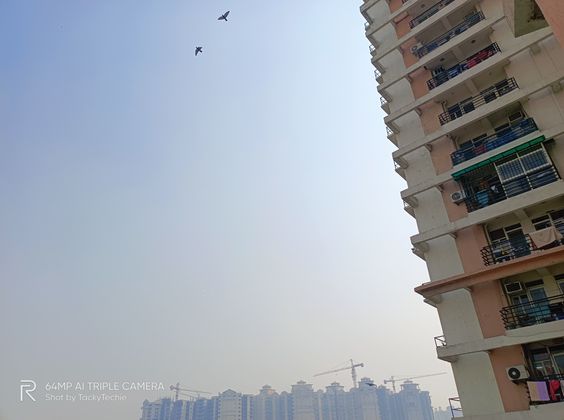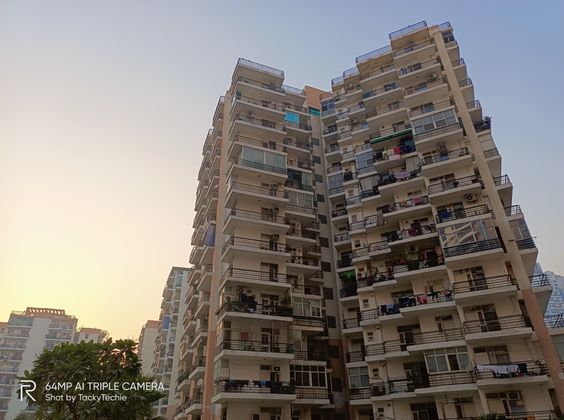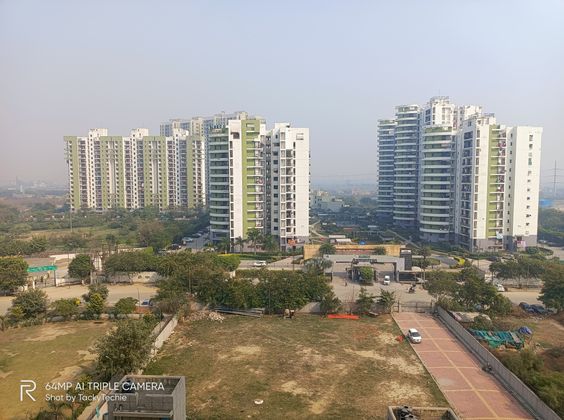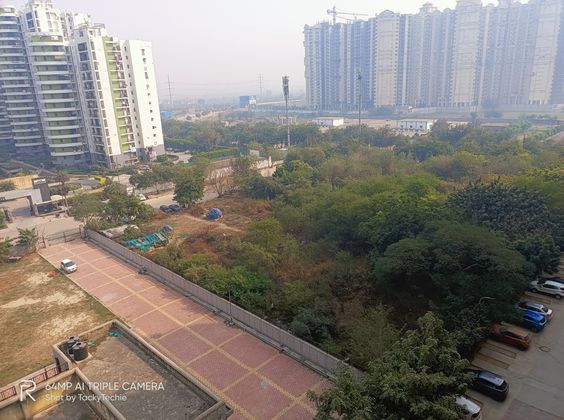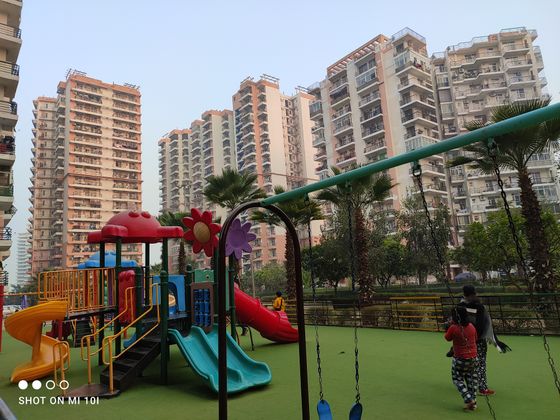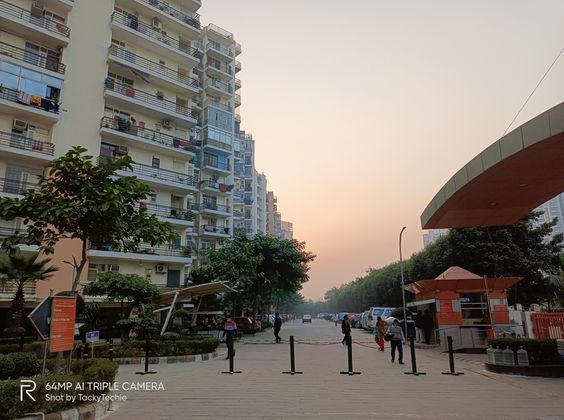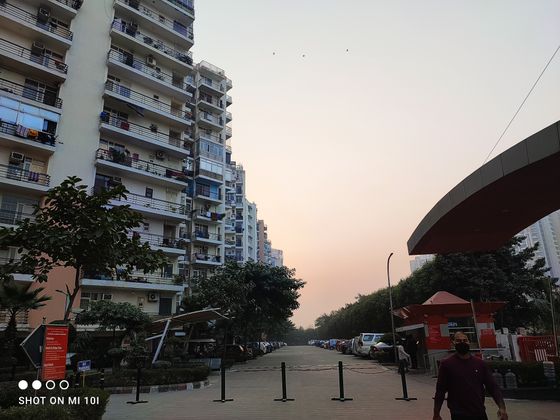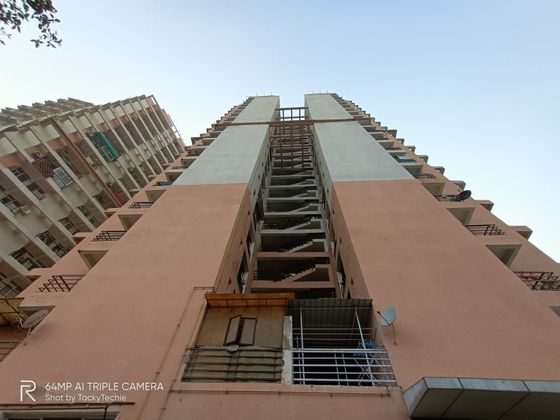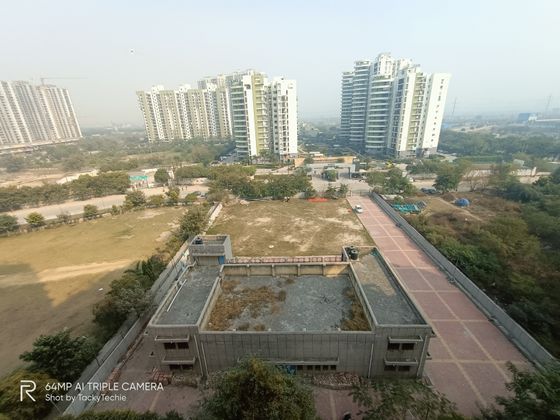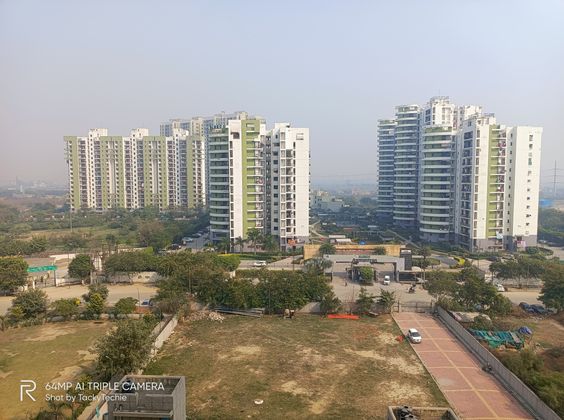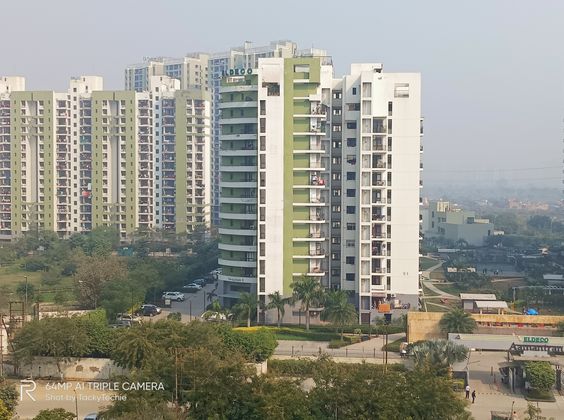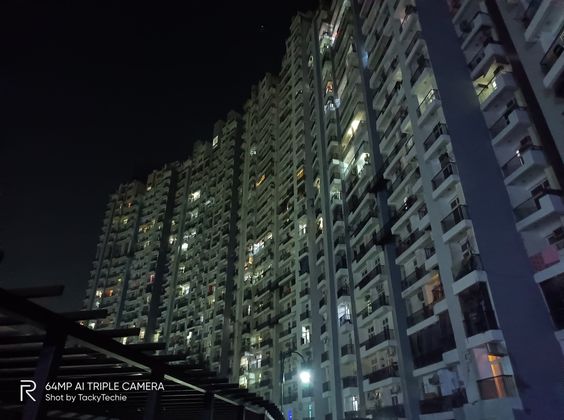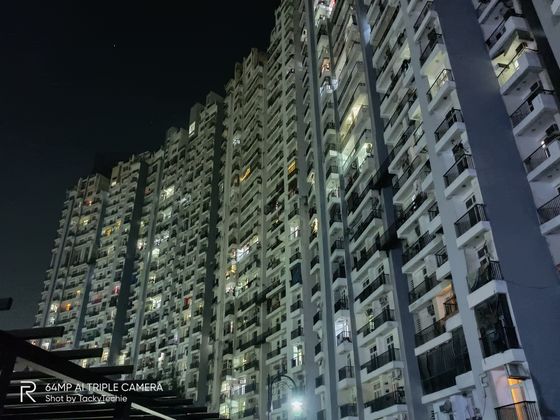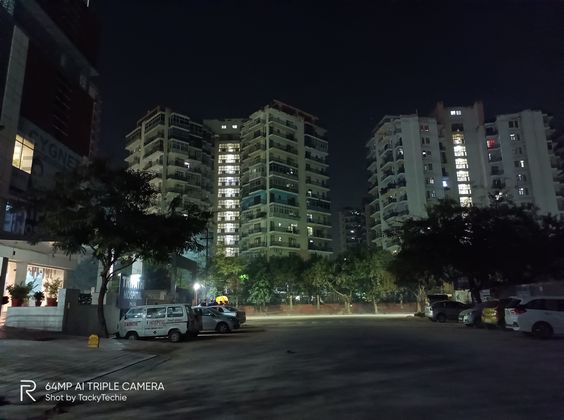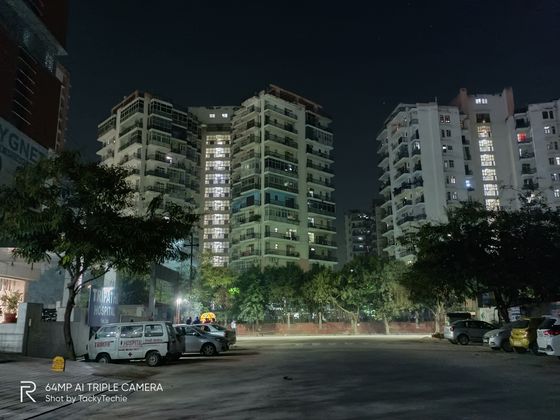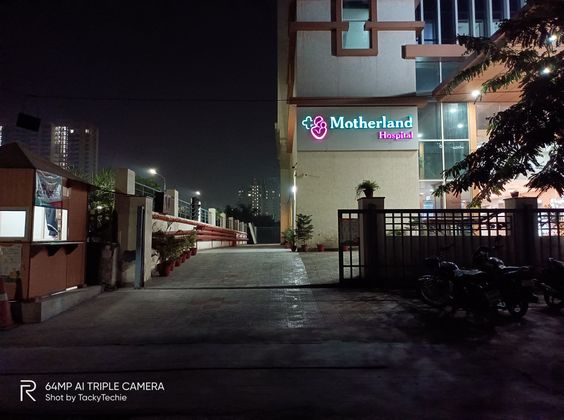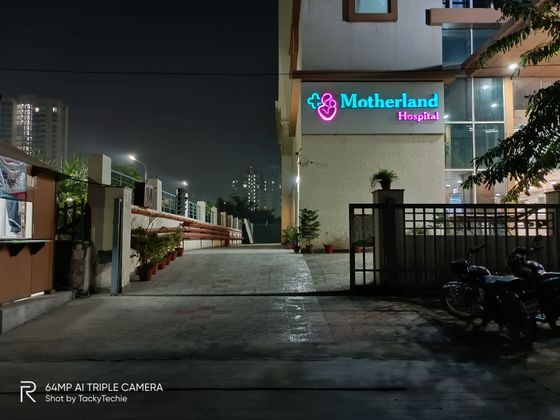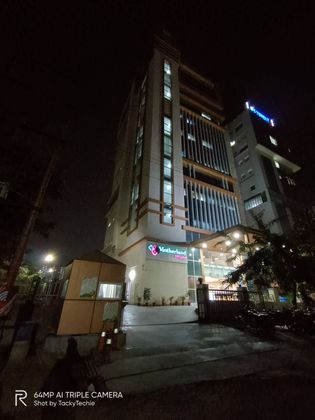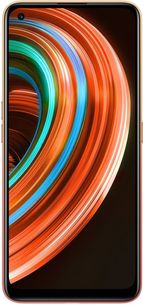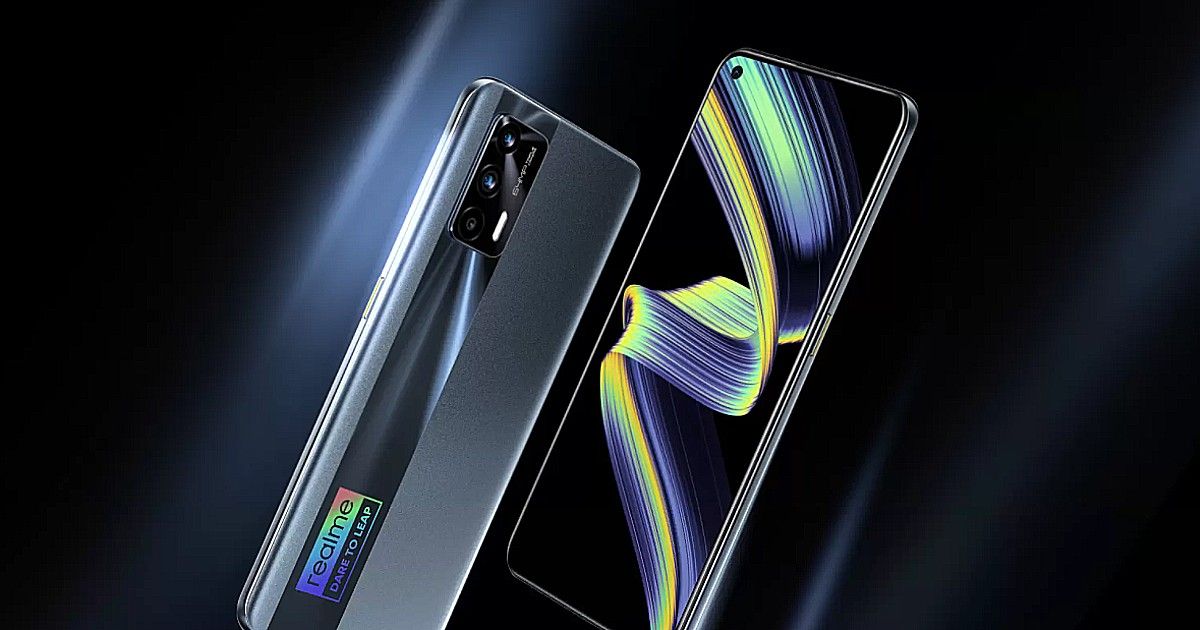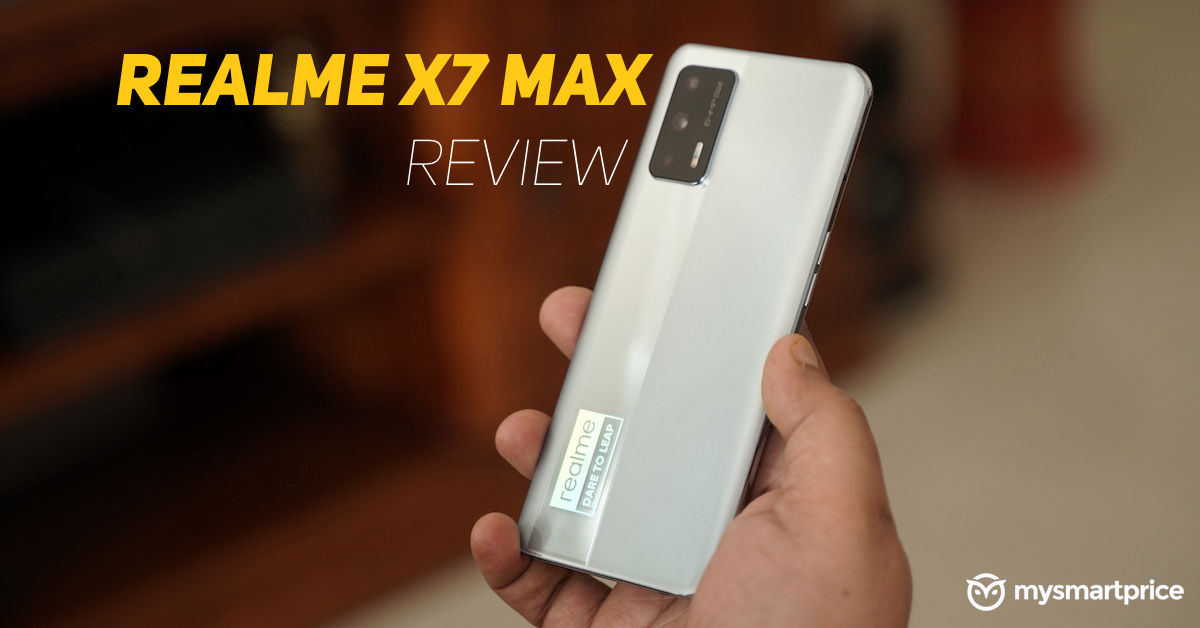
The Realme X7 is now the second smartphone to offer 5G support in the under-20,000 segment in India. It’s certainly a welcome upgrade, marred only by the fact that there’s no 5G networks to take advantage of. The company did spend some time highlighting how life will change once the networks go live, but that’s still some time away. But even without the 5G bit, the Realme X7 packs enough firepower to become a compelling mid-range option in 2021. Is the Dimensity 800U powerful enough? Can you live with a 60Hz display in 2021? Is 50W charging fast enough? All this and more, I answer in my review of the Realme X7. Read on –
Design: Glamorous AF
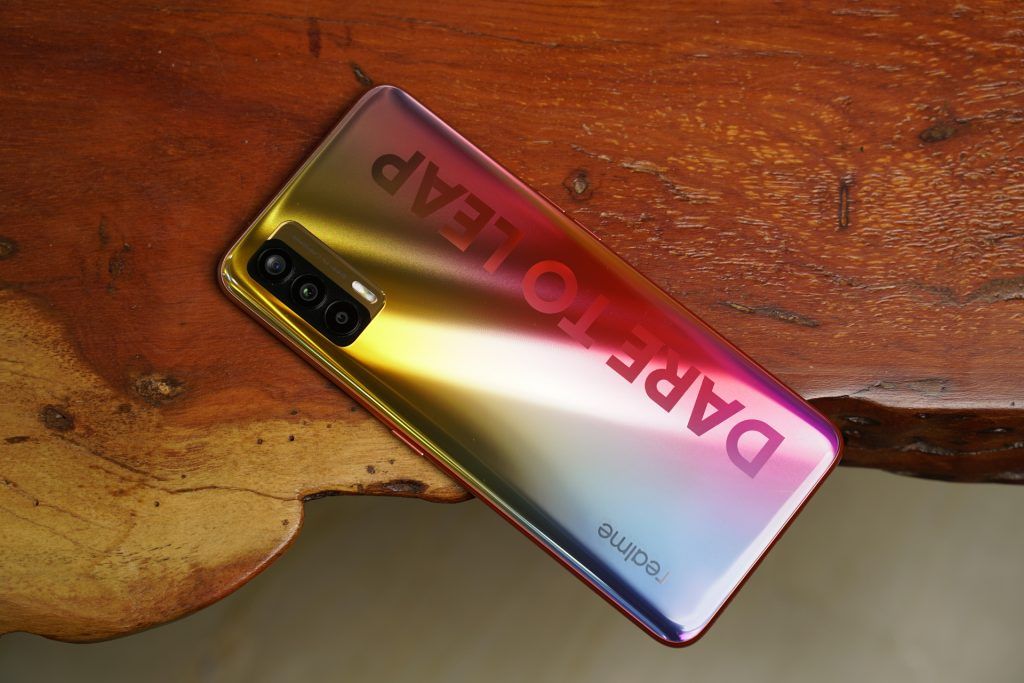
The Realme X7 has perhaps the most flashiest design the company has ever unveiled. The material is glossy plastic and there’s the ‘Dare to Leap’ tagline written boldly on the rear panel. The tagline used to be part of the bundled TPU case before, but Realme must have thought it needs more prominence. And prominent it is, no matter which angle you look at it from, the Dare to Leap sign is unmissable. I’m not too big of a fan of seeing brand logos and taglines explicitly in the body, and this one is a bit too tacky for my liking. But I’m sure there are takers for this glossy design, but I’m not one. It’s smudge prone, and the grade of plastic Realme used in the X7 is also prone to scratches. Our review unit bears witness.
Having said that, the smartphone is quite comfortable to hold. The taller 20:9 aspect ratio makes it easy for one-handed usage, and the camera module doesn’t jut out too much to make the phone wobble on a flat surface. It still doesn’t sit flush though. The Realme X7 only comes with a dual SIM slot. There’s no expandable storage support. A single mono speaker handles the audio, and haptic feedback is strong and rumbles in your hand.
In all, the Realme X7 feels a little too glamorous for my taste, but it’s comfortable to hold and the display, although slower, is good enough for streaming content and playing games.
Display: Goodness of AMOLED, but sticks to 60Hz

The Realme X7 sports a regular 60Hz display, albeit it’s an AMOLED panel. The funny thing is, even in 2021, Realme is making customers choose between better colour fidelity and high refresh rate in the Realme X7. If you want both, you need to spend Rs 10,000 more for the X7 Pro. Between the two, there’s a drastic difference in perceived speeds because of the lower refresh rate, but if you are not a stickler for fast scrolling, the colours are actually quite nice. The screen by default reproduces saturated colours. A bluish tint when looking at the panel from a sharp angle is normal, and other than that, there’s no visible colour shift at peak brightness. The smartphone has Widevine L1 certification, but lacks HDR support. The screen brightness, however, is not enough for perfect sunlight legibility, and I had to struggle making out the frame for a photo I was trying to take.
Performance: Snapdragon beware!
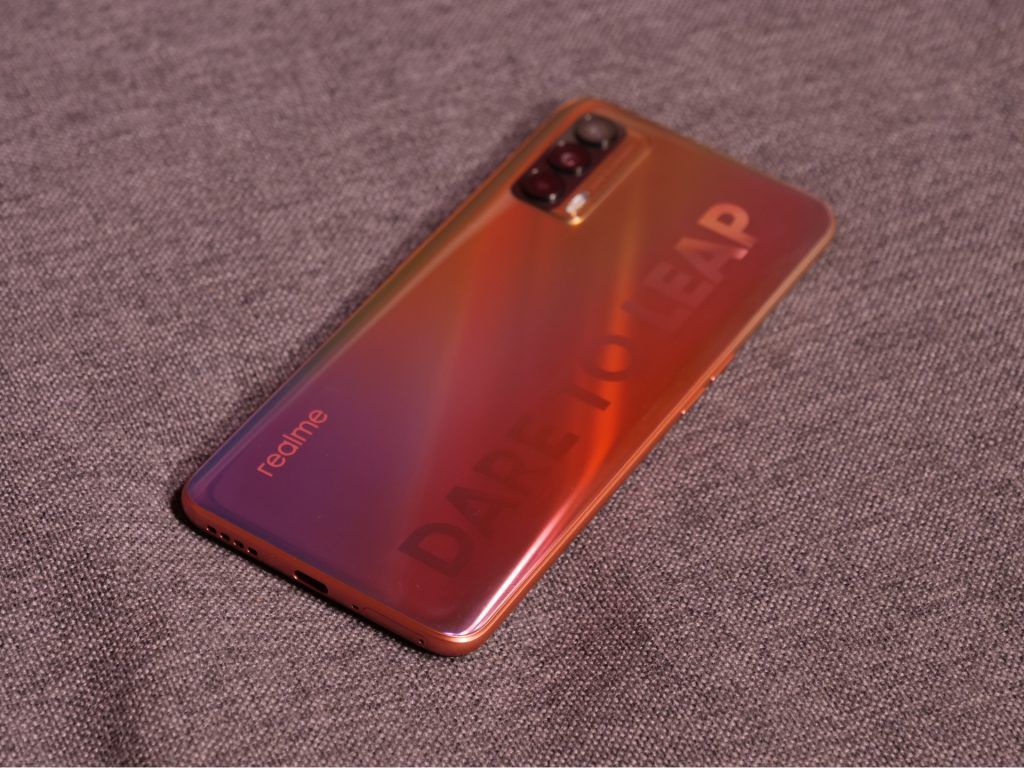
Tacky design aside, the Realme X7 marks the debut of the MediaTek Dimensity 800U SoC in India, MediaTek’s second 5G chip after the Dimensity 1000+. And this one is aimed squarely at the masses. Realme priced it sweet, just under Rs 20,000 for the 6GB RAM variant making 5G more accessible than ever before. The CPU also seems capable of the usual tasks cut out for smartphones. The CPU has two ARM Cortex-A76 cores clocked at 2.4GHz along with six ARM Cortex-A55 cores clocked at 2.0GHz. The SoC uses the same CPU cores as the Snapdragon 765, and it’s even clocked higher. The Dimensity 800U also competes with the Snapdragon 750G on the Xiaomi Mi 10i which incidentally uses more powerful Cortex-A77 cores, albeit a bit underclocked. We already did a fun performance shootout between these three mid-range 5G chipsets in a video on our MSP English channel. Do watch it for some surprising takeaways.
Here are some key observations about the Realme X7’s performance –
- The MediaTek Dimensity 800U beats both the Snapdragon 750G and the Snapdragon 765G on AnTuTu benchmark. The 800U scores significantly higher on both CPU and GPU tests. On Geekbench, however, the results are reversed and the Snapdragon 750G with the newer ARM cores take the lead.
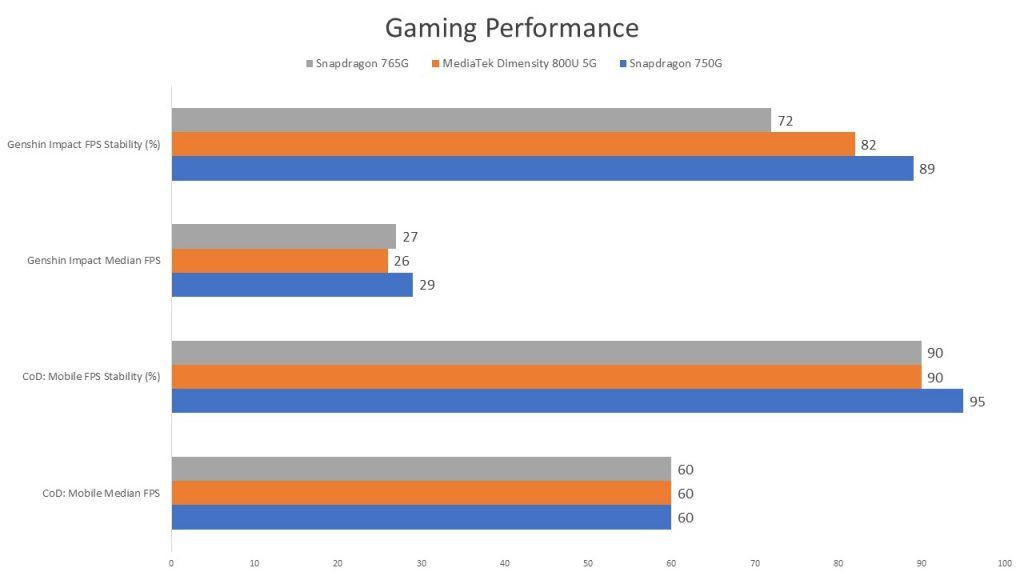
- The Mali-G57 MP3 GPU on the D800U is actually not bad. It can’t run games at the highest graphics, but there’s no stutter in games like CoD Mobile which can be played at medium graphics. The Realme X7 also runs high-end titles like Genshin Impact, allowing me to even crank it up to the highest graphics, but at the cost of significant drop in frame rates.
- Even in daily usage like sending messages, browsing social media, editing documents on WordPress, the Realme X7 feels quite smooth. It lacks the finesse of a high refresh rate display, but if you haven’t ever used it, you won’t miss it.
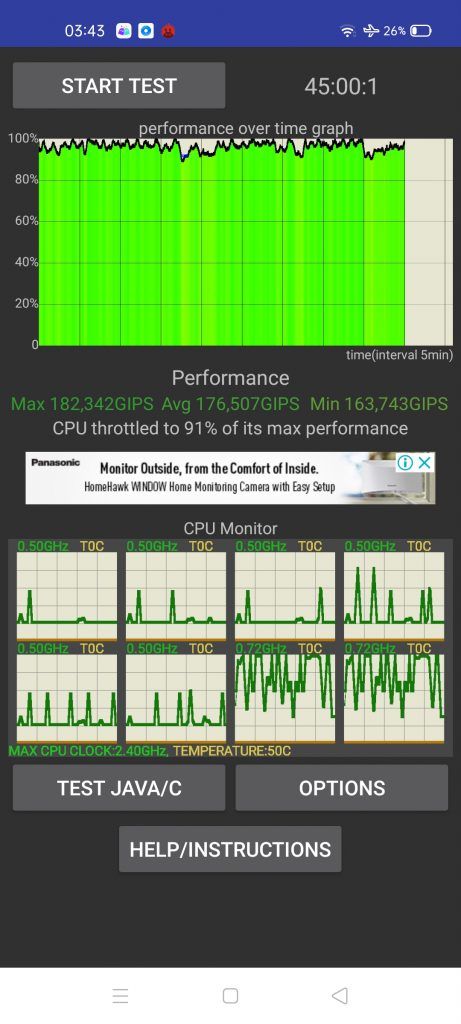
- Impressively, the chipset manages to hold up much better than its peer on sustained performance. The Realme X7 throttled to only 91% of its performance after a 45 minute long load on the CPU.
- The Realme X7 takes around 30 seconds to boot up, which is what most mid-rangers take to boot. The in-display fingerprint sensor isn’t the fastest, but you will hardly need it with Face Unlock on, which incidentally also works when you are wearing a mask.
The Dimensity 800U on the Realme X7 is definitely a great addition to the mid-range segment. It’s decently fast and matches the performance of best-selling mid-rangers of 2020, and sometimes even topples them. The 5G modem might not be important now, but six months down the line, this is the chipset that will let you leverage high-speed internet that’s just around the corner. But as many may guess, MediaTek still has some catching up to do to match Qualcomm’s finesse. For one, the ISP on the Snapdragon 750G and the 765G is far more powerful than the 800U’s. Both companies approach AI computing in different ways. While Qualcomm keeps things relatively open for third parties to leverage the APIs and build their own AI applications, MediaTek’s AI support is restricted only to the features the chip ships with. Furthermore, the Snapdragon chips in this segment also support mmWave 5G. So if you ever happen to be in the US, you can take advantage of blazing fast internet speeds on the Mi 10i and the OnePlus Nord. The Realme X7 will be able to tune into a sub-6GHz network.
Software: Android 10 out of the box in 2021?
What’s disappointing is the Realme UI which is based on Android 10. We may be months away from the first developer beta of Android 12, but brands still haven’t got around offering Android 11 out of the box. Realme UI doesn’t have as much bloatware as it used to before, but you will still find some third party apps by default that can be uninstalled. The UI is responsive and generally smooth to use. I did not notice any stutters while scrolling or launching an app. In fact, apps like the dialer and camera launch almost instantly. There’s ample features to customise the smartphone to your liking – Switch to dark mode, change the accent colours, tweak icon shapes and more. In fact, the smartphone’s feature set is ditto the same as other Realme phones launched last year.
Camera: Lacks lustre
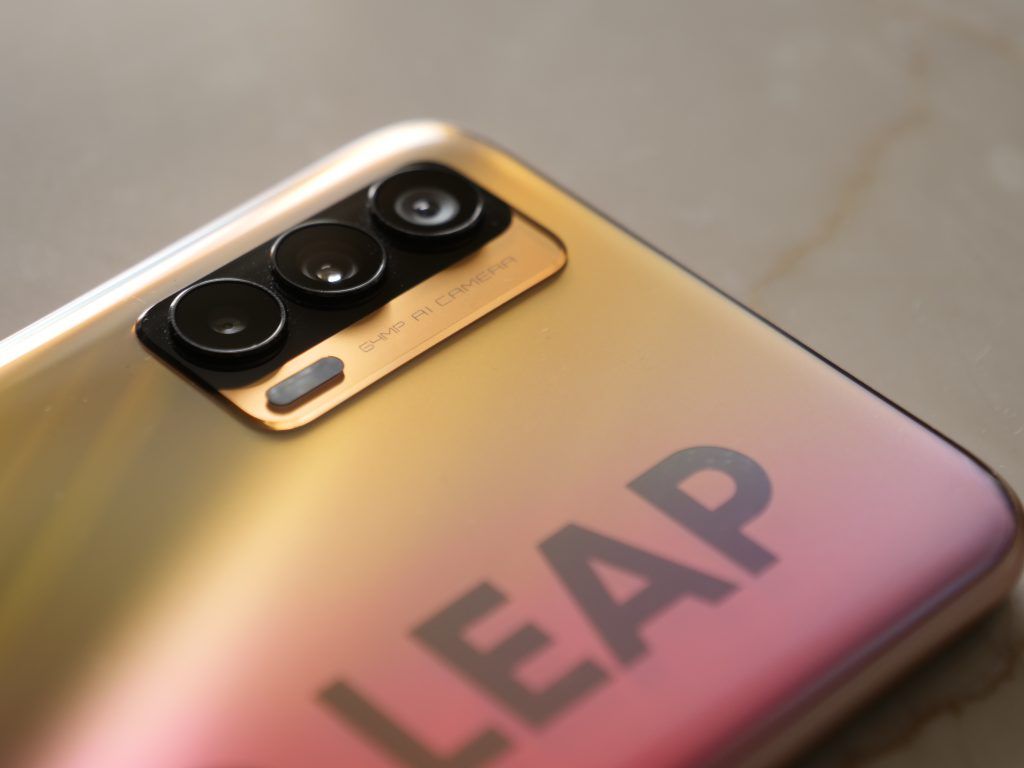
While the performance is generally acceptable for a mid-range smartphone, the 64MP camera is what most Realme fans will look forward to. The 64MP triple camera stack on the Realme X7 will be good enough for the average joe, but anyone looking for consistent quality, the camera might disappoint. Here are my observations on the camera performance –
- The 64MP primary camera is fast. The shutter closes instantly on the press of the button, and there’s no lag in the shooting process. With the right amount of light, you can click moving objects like birds in the sky with crisp details.
- The daytime shots come out fairly sharp. Objects with sharp edges like buildings are reproduced accurately enough. There was a warm tinge in most of the photos I took, but that could be because of the smog that enshrouds the city every winter.
- Then again, most of the sharpness you see in the frame are primarily software-derived. It’s good enough for photos of buildings and people, but not so much when shooting foliage, as this sample will tell you. The sharpness in the forested area looks quite artificial, and almost feels like it was achieved by increasing the sharpness slider in an editing app.
- Having said that, the colour science is far richer than what the Mi 10i offers. Even with the AI mode on, the same sample from the Mi 10i looks dull as compared to the one from the Realme X7.
- Sadly enough, there is no improvement in the quality of the ultrawide camera. It’s still the same 8MP sensor you get with a small f/2.3 aperture which is good enough for sweeping landscapes when there’s ample daylight, but anything less and you have photos marred with noise and shoddy details.
- The 2MP macro camera, however, felt much better in use this time. The focus locked in faster. The details are commendable enough. And there’s little distortion in the colour science.
- The Realme X7 lacks a telephoto lens. Instead it relies on the crop factor of the 64MP camera to deliver up to 10x zoom. The quality is maintained till 2x zoom at best, and then onwards, it severely degrades. Funnily enough, the AI scene recognition regularly misinterpreted a zoomed-in frame of a building as a chunk of text.
- The night mode in the Realme X7 is a lot more controlled. It doesn’t unnecessarily illuminate the entire frame, but enhances brightness of only the parts that are lit up by whatever light there is in the frame. The output is sharp enough from the primary camera, but it’s equally worse from the ultrawide camera.

- The Realme X7 shoots excellent portraits. Despite lacking a physical depth sensor, the edge detection is super accurate, and facial details aren’t too distorted by beauty filters. The portrait mode does increase the contrast and clarity on subjects, but I didn’t see it go overboard.https://youtu.be/An69FKrFMRIhttps://youtu.be/XvjQssezAkohttps://youtu.be/zQwpOP_w-9s
- Videos, be it 4K or 1080p, are quite disappointing. There’s severe artifacting in the final output, and the overall quality is nowhere close to what true HD looks like on a big screen.
- The 16MP front camera shoots decent selfies. There’s ample details in selfies shot in natural light, and the portrait mode also works without going overboard in blurring the background.
Overall, the Realme X7’s camera feels like a pretty standard affair from Realme. It shoots decent photos, but doesn’t match up to the quality of the Mi 10i, or even the Realme 7 Pro for that matter. I liked the fact that the camera is fast and responsive, and it loads almost instantly from the lockscreen. But the unnatural post-processing, and patchy AI can be improved with software updates in the future.
Battery Life: Not a power guzzler
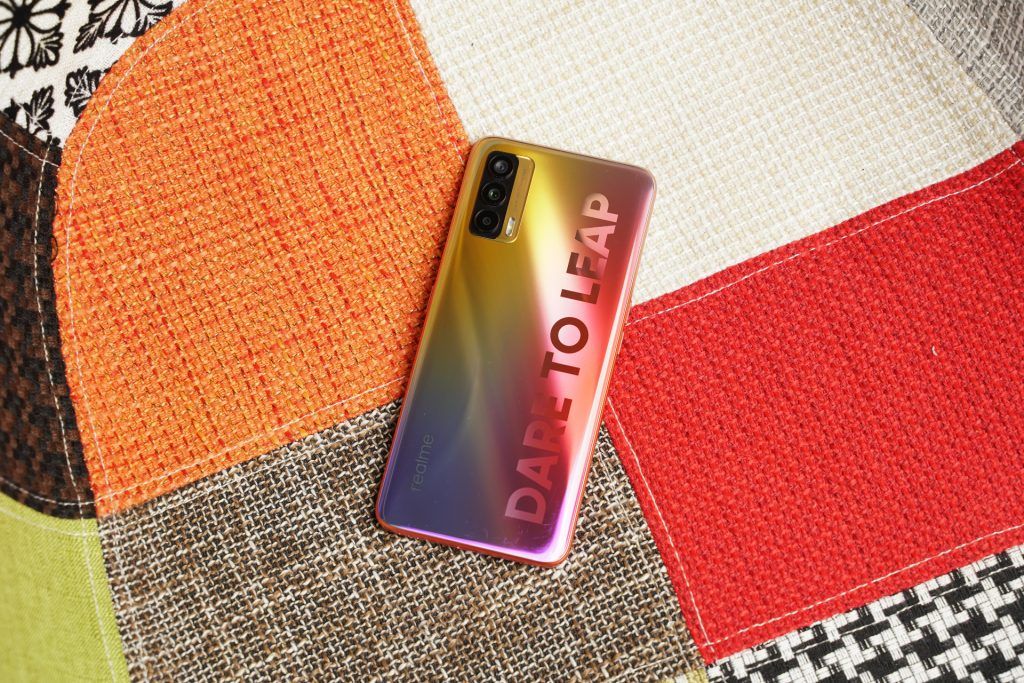
With a 4,300 mAh battery on the Realme X7 is enough to deliver more than a day’s battery life. Rushil’s battery life comparison on our MSP Hindi channel resulted in the Realme X7 actually winning the round with 8 hours 10 minutes of screen-on time. Which easily converts to more than a day’s usage in the real world.
The 50W fast charging is another ace up Realme’s sleeve. It’s almost as fast as the brand’s 65W fast charger, and tops up the Realme X7 in around 50 minutes.
Should you buy the Realme X7?
All things combined, the Realme X7 feels like a comeback of sorts for Realme’s X series after the disappointing Realme X3 series. The X7 Pro will probably get its own fan base, but it’s the Realme X7 that offers a lot more value for money. At Rs 19,999, the smartphone offers reliable performance, day long battery life and hyper fast charging. The camera is where things can improve a lot and the company does have a tendency to continue tweaking the camera performance in smartphones well after their launch. So I won’t be surprised if the cameras later become far better optimised in the future.


